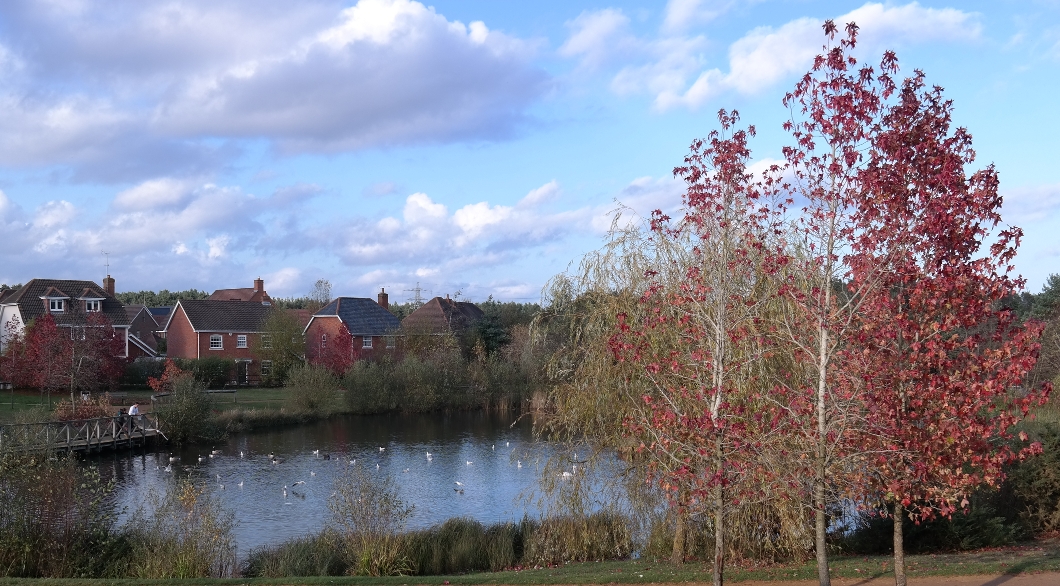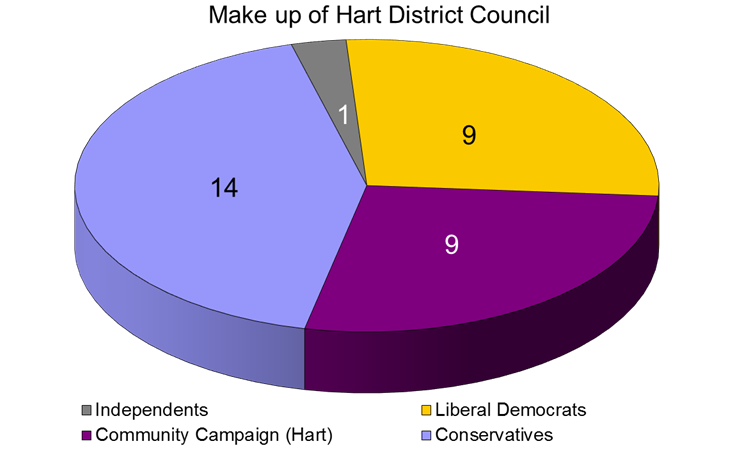by Alan Oliver
Since the introduction of the 20mph limit covering the roads between
Albert Street and Albany Road, we have had many conversations with
people on whether this is a positive or negative contribution to their
quality of life.
Apparently the scheme was introduced not for safety reasons but to
improve the environment for residents. Hampshire County Council (HCC)
promised to consult with residents in Feb 2015, 12 months from
adoption. As a group, the Community Campaign are committed to making
sure residents get the final say in this and not councillors or
council officers.
Following a meeting I had with HCC officers in October 2014, it became
apparent that the consultation with residents has been put back to
2016 at the earliest. The reason they gave being “to take account of
other 20mph limits being introduced across Hampshire to better
formulate future policy”. Don’t try and find this published on HCC’s
web site as you won’t find it. Another case of Hampshire changing the
rules and Fleet’s county councillor, Sharyn Wheale, not letting
residents know.
Notwithstanding this delay, I was able to secure a commitment from the
officers to include two additional questions into the eventual
consultation; questions which many of you have been asking;
Should all the roads currently in the scheme remain 20mph?
Should the 20mph limit to be turned into a 20mph zone if residents
decide to keep it?
Designating a 20mph zone will almost certainly mean the introduction
of speed calming measures (chicanes, junction tables and speed humps).
The view of the police is clear on this; they expect 20mph zones to be
mainly self-enforcing. They do not see it as a priority to enforce
such zones and want the physical design and layout of streets to
ensure traffic is restricted to the speed limits. Personally I am not
sure that such calming measures would improve the quality of life for
residents, especially as Hampshire favour the introduction of
chicanes.
We would urge drivers to respect all 20mph limits. Many of these are
introduced outside of schools and the safety of the children using
them is paramount.
County council update

by John Bennison
September saw the opening of the new Tweseldown Infants School on the
Crookham Park development. Without extensive lobbying by both the
school and local councillors, HCC would have been content to cram the
extra children onto the previously combined infant and junior school
site. Getting HCC to accept that a new school building was required
was a great victory for those who campaigned so tirelessly for
splitting the school between two sites.
The proximity of the QEB development site (now Crookham Park) to the
existing school, allowed for this fortuitous and creative site split.
The result of which is that pupils can now enjoy their education in a
spacious environment on both sites.
Elsewhere, the county council’s policy to bolt extra classrooms onto
existing schools continues. Without doubt, this can create a school
(primary or secondary) which is too large. HCC’s policy inevitably
results in play areas being replaced by buildings, thus reducing
facilities for the ever increasing the number of children. This has to
have a negative impact on the educational qualities of the school
environment.
All developers trying to build a few hundred houses offer a school
site, knowing that HCC cannot afford to build it. Thus existing
schools are expanded with 'temporary' classrooms being 'permanently'
located on what had once been playing fields. Only larger
developments, such as Elvetham Heath, enable HCC to justify a
completely new primary school.
The secondary school situation is even more dire. Fleet and Church
Crookham have two secondary schools. As Court Moor cannot expand due
to site constraints, so Calthorpe Park is at risk of becoming a
mega-school for over 2,000 pupils.
For the sake of future generations of our children we need to have a
structured approach to how we combine new housing growth with the
provision of suitable education facilities.
So what now for Hart’s Local Plan?
Hart desperately needs to get a formally adopted Local Plan (LP) in
place so as to have some control over where new development goes. The
plan does not stop development but rather provides a framework that
indicates where development should go to meet the supply of houses
which Hart is deemed to need to provide. Once Hart has an LP in place
we can use it to fend off inappropriate planning applications by
pointing to the LP as proof that we’ve got our future housing needs
covered.
Government policy requires Hart to plan for the building of 7,534
homes in the period 2011-2032. This number is imposed upon us by the
government's National Planning Policy Framework (NPPF) and its implied
mandate that we address 'objectively assessed housing needs'. If we
don't nominate sites for these houses then developers can effectively
dictate where they go.
Of this total at least 3,516 have already been granted planning
permission. The majority in and around Fleet, Church Crookham and
Hook. Building on brownfield sites is an option but will only address
a small portion of the 4,018 still left to find – this option will be
included in the plan. However, within the plan period around 3,250
houses will inevitably need to be built on greenfields. This is the
result of the housing targets imposed on us by the policies of the
national government; it is not Hart’s choice.
In having to find space for 7,534 new homes, unless Hart proposes
something radical, these houses will end up expanding existing
settlements dramatically. Experience of the incremental expansion of
our town over the past 30 years shows that such ‘bolt on’ development
fails to deliver infrastructure. It would inevitably fail to deliver
the much needed new secondary school nor be able to provide adequate
highway improvements. Just how do you improve road access through
Crookham Village, Fleet and Church Crookham to accommodate more
traffic anyway?
For this reason, based on feedback from the recent ‘options’
consultation and faced with the inevitable impossibility of mitigating
large scale expansion of existing communities, a new settlement option
looks likely to be an integral part of the new LP. Even with the
allocation of a new settlement, some development will be needed across
the rest of Hart. This would be particularly true during the time it
would take to ramp up a new eco-village project. Development within
existing settlements such as blocks of flats on the site of disused
offices, would look to account for 750 new homes. Sites adjoining
existing settlements would also be looked at to deliver up to 650
homes. While a further 1,400 homes for existing towns and villages may
seem a lot, there are sites around Guillemont Park and Minley which
could account for half of these. The burden would be shared with
places like Yateley and Hook.
The new settlement can be beneficial because it would justify having
its own new secondary school. Conversely, incremental development on
the edge of existing towns can only ever lead to the corresponding
growth of existing secondary schools; so putting at risk the
personalised child focus for which our local schools are noted. A new
settlement can also be planned with a suitable road network, rather
than simply exacerbating existing highway pinch points as has been the
case with the developments of the recent past.
A new settlement will have the capacity to help address the future
housing needs of Hart beyond the plan period. It will also help us to
deliver the required housing stock if the government foist the unmet
demands of our neighbouring authorities upon us. While a new
settlement in the countryside is never going to be a welcome prospect,
it does offer the opportunity to deliver more comprehensive
infrastructure than the relying on the expansion of existing
settlements into the surrounding countryside.
Elvetham Heath matters
 The
process of adoption by Hampshire County Council (HCC) of the roads,
lights and verges within Elvetham Heath is progressing far too slowly.
Without adoption it still remains with the developer to maintain many
of these basic items of infrastructure. Slowing down the adoption
process may avoid immediate costs to HCC but is certainly against the
spirit of the original agreements when Elvetham Heath was planned. We
share the concerns of the parish council and request that HCC step up
their efforts to meet their obligations and promises.
The
process of adoption by Hampshire County Council (HCC) of the roads,
lights and verges within Elvetham Heath is progressing far too slowly.
Without adoption it still remains with the developer to maintain many
of these basic items of infrastructure. Slowing down the adoption
process may avoid immediate costs to HCC but is certainly against the
spirit of the original agreements when Elvetham Heath was planned. We
share the concerns of the parish council and request that HCC step up
their efforts to meet their obligations and promises.
Due to the extended time it has taken HCC to start the adoption of
roads on Elvetham Heath, essential paperwork has been lost which is
needed to provide assurance as to construction techniques. Hence the
inconvenience caused to residents with the need to drill bore holes in
the roads. More outrageous is that even when a road is adopted by HCC
they continue to refuse to maintain the lights and bollards. The
situation is now so bad that street lights which have been broken for
2 years are being replaced at the expense of the parish council
because of their worries over the safety of residents walking into
Fleet over the footbridge and children returning from school as the
nights draw in. The unbelievable excuse offered by HCC is that as the
lights don’t have a reference number painted on them they do not
exist.
One might ask why the county councillor for Fleet has not stepped in
to find a solution for this sorry situation? Certainly she has not
stood up for Elvetham Heath residents against HCC bureaucracy nor
actively supported the parish council in their quest to resolve these
problems.
 The
parish council is, however, making good process in acquiring the right
to maintain the verges and landscape planting across the residential
parts of Elvetham Heath for themselves. Community Campaign cabinet
member Alan Oliver has promised Elvetham Heath Parish Council that he
will ensure all the money given over for future landscape maintenance
by the developer but currently held by Hart District Council is
transferred to the parish council as soon as their ‘License to
Cultivate’ is approved.
The
parish council is, however, making good process in acquiring the right
to maintain the verges and landscape planting across the residential
parts of Elvetham Heath for themselves. Community Campaign cabinet
member Alan Oliver has promised Elvetham Heath Parish Council that he
will ensure all the money given over for future landscape maintenance
by the developer but currently held by Hart District Council is
transferred to the parish council as soon as their ‘License to
Cultivate’ is approved.
Elvetham Heath Parish Council do a sterling job of looking after and
striving to improve the environment and infrastructure in their area.
Indeed all the parish councils in the local area work very hard to
ensure that the newer developments get all the facilities that were
promised for them when they were planned. This is just as true of
Church Crookham Parish Council and the facilities on the Crookham Park
development and Fleet Town Council for Edenbrook. Indeed it has only
been in recent years when Crookham Village PC were able to take over
the running of the Zebon Copse Community Centre that it has really
started to thrive despite Hart District Council wanting to pull it
down just a few years ago.
As more new developments get foisted on the community we have to do a
better job of ensuring that the bodies who should be looking after
infrastructure fulfil their obligations to do so and that the planning
authorities ensure that legal agreements are robustly written so that
the parish councils are empowered to make best use of the leisure
facilities which are given over to the community.
The various parish councils do an outstanding job of battling the
bureaucracy, but in reality the upper tiers of local government should
not be making it so unnecessarily difficult and frustrating for them.
Published by: Julia Ambler, 39
Du Maurier Close, Church Crookham, Hampshire, GU52 0YA





 The
process of adoption by Hampshire County Council (HCC) of the roads,
lights and verges within Elvetham Heath is progressing far too slowly.
Without adoption it still remains with the developer to maintain many
of these basic items of infrastructure. Slowing down the adoption
process may avoid immediate costs to HCC but is certainly against the
spirit of the original agreements when Elvetham Heath was planned. We
share the concerns of the parish council and request that HCC step up
their efforts to meet their obligations and promises.
The
process of adoption by Hampshire County Council (HCC) of the roads,
lights and verges within Elvetham Heath is progressing far too slowly.
Without adoption it still remains with the developer to maintain many
of these basic items of infrastructure. Slowing down the adoption
process may avoid immediate costs to HCC but is certainly against the
spirit of the original agreements when Elvetham Heath was planned. We
share the concerns of the parish council and request that HCC step up
their efforts to meet their obligations and promises.  The
parish council is, however, making good process in acquiring the right
to maintain the verges and landscape planting across the residential
parts of Elvetham Heath for themselves. Community Campaign cabinet
member Alan Oliver has promised Elvetham Heath Parish Council that he
will ensure all the money given over for future landscape maintenance
by the developer but currently held by Hart District Council is
transferred to the parish council as soon as their ‘License to
Cultivate’ is approved.
The
parish council is, however, making good process in acquiring the right
to maintain the verges and landscape planting across the residential
parts of Elvetham Heath for themselves. Community Campaign cabinet
member Alan Oliver has promised Elvetham Heath Parish Council that he
will ensure all the money given over for future landscape maintenance
by the developer but currently held by Hart District Council is
transferred to the parish council as soon as their ‘License to
Cultivate’ is approved.